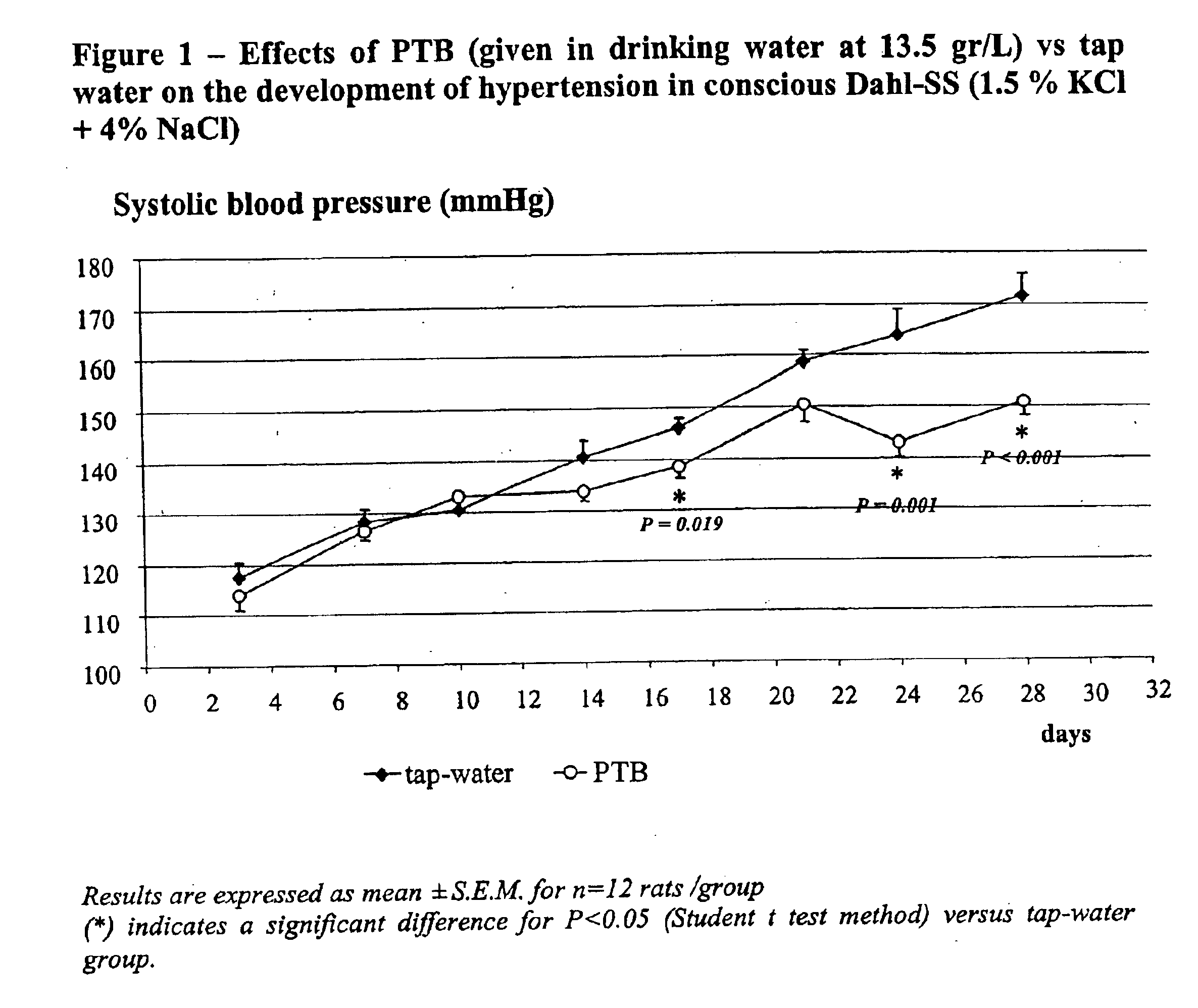Potassium taurate bicarbonate and ascorbate
a potassium taurate and ascorbate technology, applied in the field of potassium taurate bicarbonate and potassium taurate ascorbate complexes, can solve the problems of high blood pressure, underutilized nutritional potassium supplements, and not widely available, so as to achieve low or prevent elevated blood pressure, maintain normal blood pressure levels, and favorable effect on blood pressur
- Summary
- Abstract
- Description
- Claims
- Application Information
AI Technical Summary
Benefits of technology
Problems solved by technology
Method used
Image
Examples
example 1
[0041]An aqueous solution having a pH of about 8.4 was prepared by dissolving 500.6 milligrams (5 millimoles) of potassium bicarbonate (KHCO3) in 25 milliliters (mL) of water with stirring. To this solution was added 625.5 milligrams (5 millimoles) taurine with stirring. The pH of the resulting aqueous solution was 7.4, indicating formation of potassium taurate bicarbonate complex.
example 2
[0042]A aqueous solution containing 10.0 grams (0.1 mole) potassium bicarbonate and 12.5 grams taurine (0.1 mole) in 50 milliliters of water was evaporated under reduced pressure. The oily residue was treated with 100 milliliters of ethanol and allowed to sit overnight to form a precipitate. The precipitate was collected by filtration, washed with ethanol and dried under reduced pressure to yield 21 grams of solid potassium taurate bicarbonate.
example 3
[0043]An experimental study was undertaken to assess the effect on blood pressure of oral PTB given in drinking water to Dahl salt-sensitive rats, which are known to experience an increase in blood pressure upon administration of salt. In this study, salt was administered in the diet to two groups of rats, a placebo group that received salt but not PTB and an active group that received both salt and PTB in drinking water. The results summarized in Table 1 and plotted in FIG. 1 show that PTB significantly blunted the expected rise in systolic blood pressure in the active group by an average of 21 mm Hg by the end of the 28-day study.
[0044]The study was conducted as follows: Twenty-four Dahl salt-sensitive male rats were fed regular rat chow containing 0.24% (w / w) sodium chloride for an acclimatization period. The rats were then switched to a high salt diet (4% NaCl and 1.5% KCl) and were randomly divided into two groups of twelve rats each—an active group supplied with drinking water...
PUM
| Property | Measurement | Unit |
|---|---|---|
| temperature | aaaaa | aaaaa |
| systolic blood pressure | aaaaa | aaaaa |
| weight | aaaaa | aaaaa |
Abstract
Description
Claims
Application Information
 Login to View More
Login to View More - R&D
- Intellectual Property
- Life Sciences
- Materials
- Tech Scout
- Unparalleled Data Quality
- Higher Quality Content
- 60% Fewer Hallucinations
Browse by: Latest US Patents, China's latest patents, Technical Efficacy Thesaurus, Application Domain, Technology Topic, Popular Technical Reports.
© 2025 PatSnap. All rights reserved.Legal|Privacy policy|Modern Slavery Act Transparency Statement|Sitemap|About US| Contact US: help@patsnap.com

